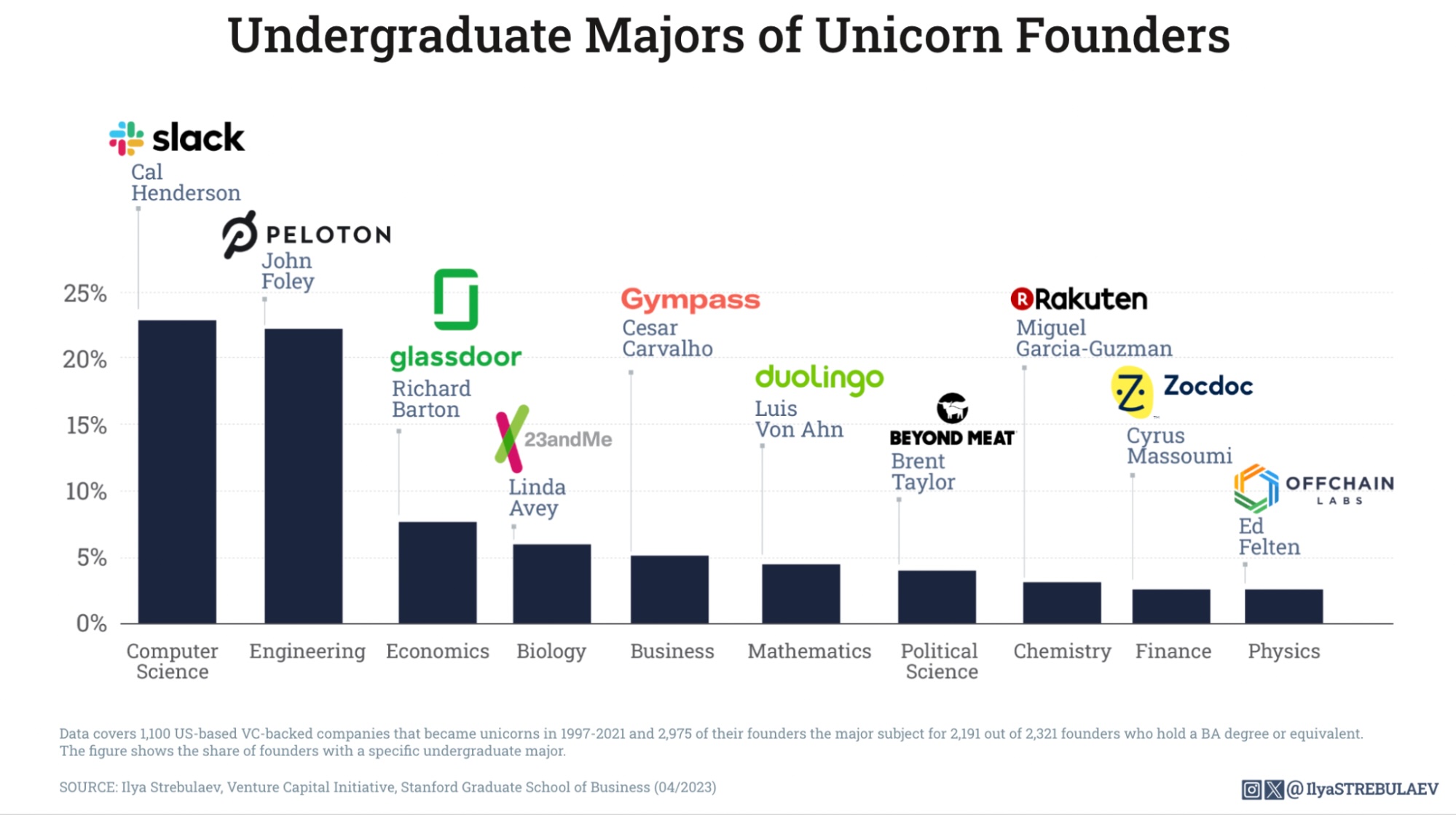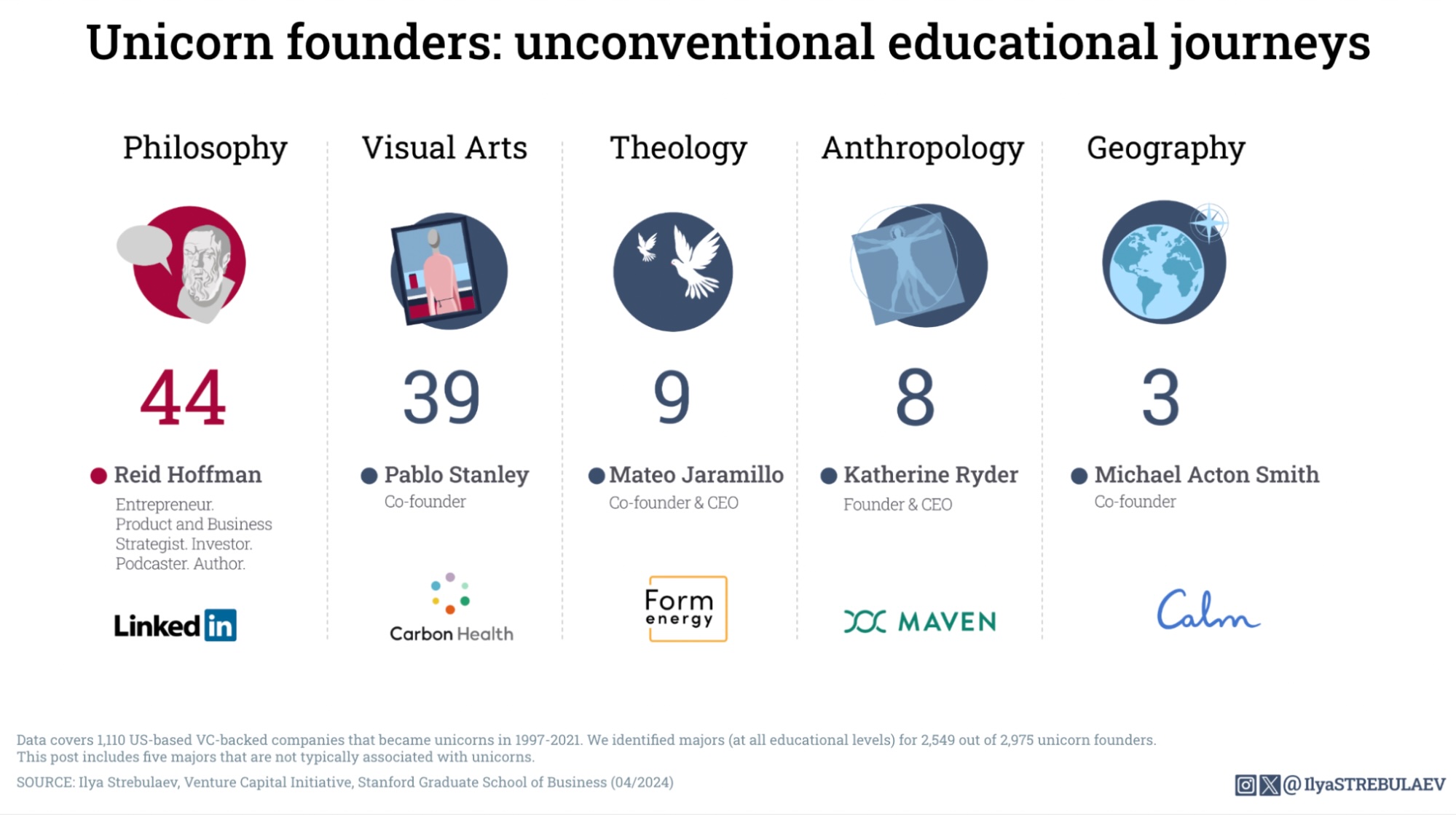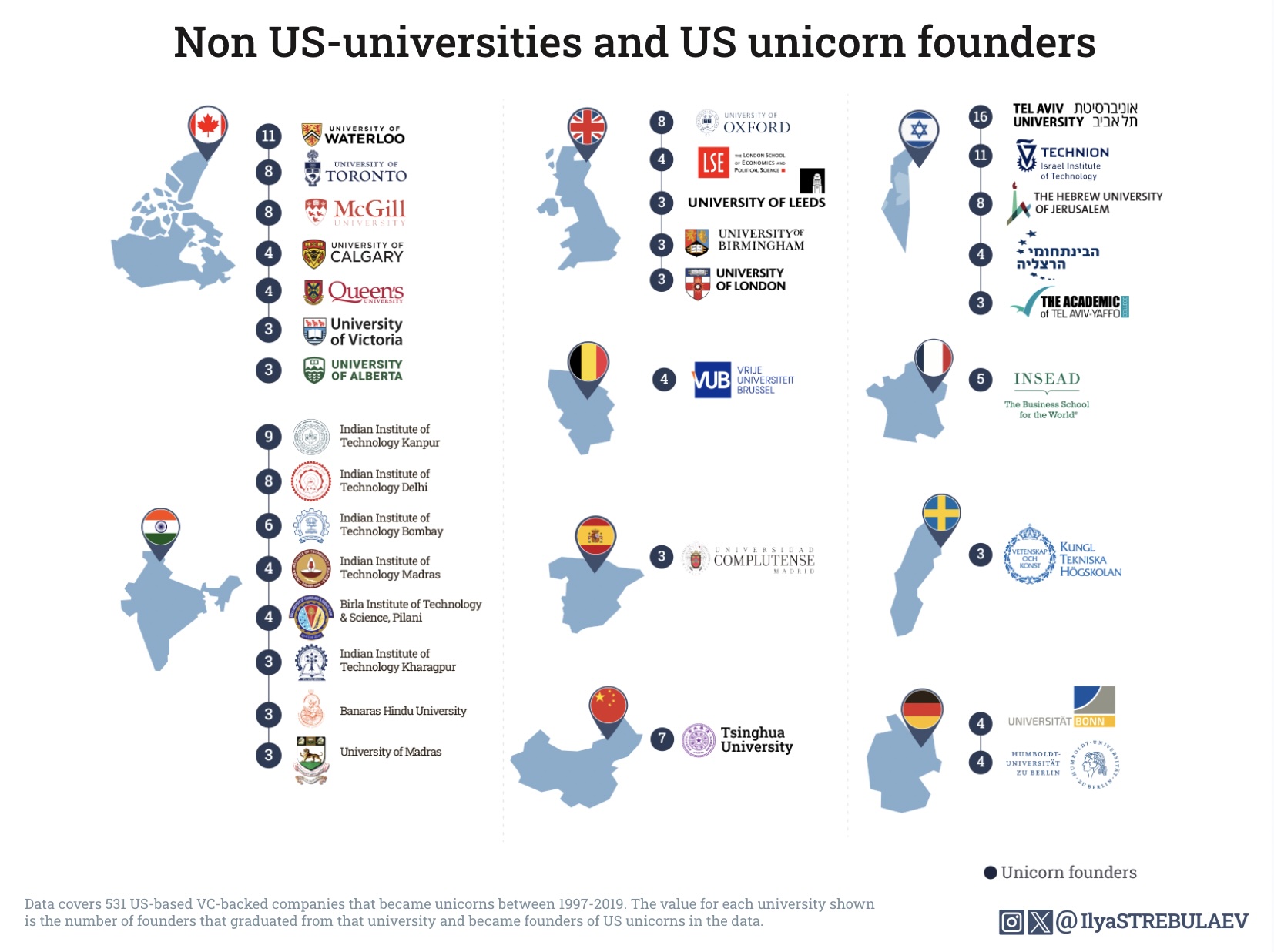
Between the myth of the good abandonment of College and the reality of the founders of education patterns, what do you really tell us? Stanford The Venture Capital and I initiative team studied the educational origin of the founders from over 1000 American corporations supported by Venture, which have achieved the status of unicorn, and the discoveries query popular narratives.
While stories about rejected millionaires-like Bill Gateswho left Harvard In the second yr to seek out Microsoft – Capture public imagination, our data reveal that the founders of the unicorn are much more educated than the general population. They are 6 times greater that they have a doctoral degree, 3 times greater likely that they have a master’s degree and twice as much more vulnerable to bachelor’s studies in comparison with an average person in the US over 25 years old.
As for higher education institutions, Stanford, WITH And Harvard consistently results in the production of unicorn founders. In the case of bachelor studies, Stanford is at the top of the list with 122 founders, followed by a myth with 87 and Harvard from 73. BerkeleyIN Yale AND Corner Complete the highest level, respectively with 60, 45 and 45 founders. (The table compares our rating based on the number of unicorn founders who continued their bachelor’s studies in these schools with the 2025 rating News from the USA.)


These numbers only tell part of the story. Another essential statistics is “Unicorn production indicator”. Unexpected leaders appear here: University of CincinnatiFor example, graduates are 3.3 times greater that they have found a unicorn than the average, while University of Utah It follows 3.2x rigorously. (The way of pondering about these indicators is as follows: in line with how much likelihood will grow to be a unicorn, if you graduate from this university and found a company supported by the project?)


The selection of the most important ones also shows clear patterns. Computer science dominates with over 500 founders, while engineering follows them. Economics ranks third. Together, these three fields constitute 53% of all unicorn founders.


However, the variety of environments is unusual – at least 47 different directions are represented, including some of the unexpected fields resembling theology, philosophy and anthropology.


The global nature of the creation of a unicorn is also visible in our data. Of the 531 US unicorns surveyed, 266 founders (21%) accomplished education outside the United States. University of Aviv He runs international institutions with 16 founders of the Unicorn, a University of Waterloo AND Technion Follow with 11 each.


Contrary to popular perception, the type of public or private institution-does not significantly affect the probabilities of unicorns. Private and public universities have almost similar “unicorn production rates” when they take into account their size of graduates population.
What is essential is greater than the type of institution is the depth of education: the typical founder of the unicorn is highly educated. To consider Modern‘S NAUBAR AFEYAN (Ph.d. in engineering biochemical from mit), Lyra‘S Dena Kaskader (MD from Colombia) or Google‘S Sergey Brin AND Larry Page (Both doctorate from Stanford’s IT program). All these founders used their advanced education to resolve complex technological challenges.
However, the learning landscape is evolving. While formal education stays a strong predictor of unicorn’s success, the democratization of knowledge has created recent paths for the development of deep specialist knowledge.
Despite this, the data suggest that building the successes of the future of the future often uses the knowledge, think research and specialized networks developed through formal education. The rejection path to billionei, although possible, stays charming values with a protruding, not a reliable template of entrepreneurship success.
Note on methodology and sources
In this study, we define unicorns as supported by VC, American corporations that have achieved a confirmed valuation price $ 1 billion in the first private round or had a liquidity event (resembling IPO or takeover) with confirmed valuation price $ 1 billion in 1997–2021 . To build our unicorn list, we began with “candidates on unicorn” from known sources resembling Crunchbase AND TechCrunchin addition to from data sets that report details about private events and liquidity, resembling Crunchbase, Pitchbook AND Venturesource. Then we manually confirmed and checked the data on the location and financing to come to a decision to incorporate each company from our last unicorns list. This process caused a total of 1110 unicorns. For each unicorn, we also identified a peer company supported by VC, which raised its first round of the undertaking in the same yr. We call a sample of such peers with a random sample. For each company in unicorns and random samples, we identified the founders and co -founders (we use the “founder” and “co -founder” from all the abovementioned sources, LinkedIn, public applications and many others. In total, we identified and confirmed 4975 founders (various data exercises can use support these data).

